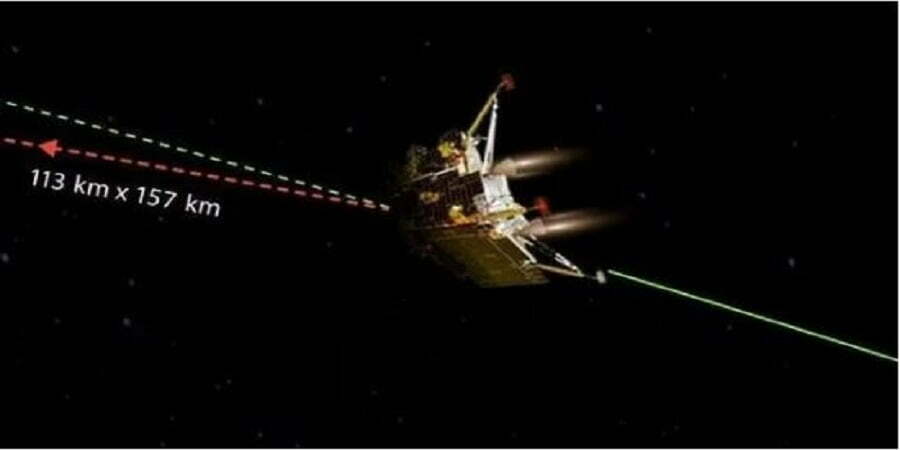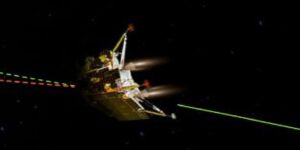Chandrayan – 3’s Vikram Lander inches closer to Moon ahead of soft-landing; another DE boosting on 20 August.
Chandrayaan-3 is a follow-on mission to Chandrayaan-2, and it aims to demonstrate India’s capabilities in safe lunar landing and roving. Here are some key points related to this mission:
- Mission Objectives: Chandrayaan-3’s primary objective is to achieve a successful soft landing on the Moon’s South Pole region. This region has been of particular interest to scientists due to its unique geological features and potential for the presence of water ice.
- Lander and Rover: The mission consists of a Lander module named ‘Vikram’ and a Rover named ‘Pragyan.’ The choice of the name ‘Vikram’ is a tribute to Dr. Vikram Sarabhai, who is considered the father of India’s space program and the founder of ISRO.
- Budget: Chandrayaan-3 was developed on a budget of approximately ₹615 crore, with the approved cost being ₹250 crores, excluding the launch vehicle cost. This reflects India’s commitment to cost-effective space exploration.
- Scientific Payloads: The Lander module is equipped with three scientific payloads, including RAMBHA-LP for measuring plasma ions and electrons density, haSTE Chandra’s Surface Thermo Physical Experiment for thermal measurements, and ILSA (Instrument for Lunar Seismic Activity) for measuring lunar seismicity.
- Rover’s Tasks: The Rover, after the soft landing, will analyze the chemical and mineralogical composition of the lunar surface. It will also carry a Laser Induced Breakdown Spectroscope (LIBS) to determine the elemental composition of lunar soil and rocks.
- Significance: Chandrayaan-3 contributes to the growing interest in lunar exploration for several reasons:
- The Moon’s influence on Earth’s climate stability and tidal patterns.
- The discovery of water and potential resources on the Moon, such as helium-3 and rare earth metals.
- The Moon’s proximity makes it an ideal platform for testing technologies and conducting scientific experiments.
- Challenges: Soft-landing on the Moon presents significant challenges due to the lack of atmosphere and the need for precise control. The mission aims to learn from past experiences, including Chandrayaan-2’s landing attempt, to overcome these challenges.
It’s worth noting that Chandrayaan-3 is part of a global effort to explore and utilize the Moon’s resources for scientific and potential future human missions. India’s continued participation in lunar missions contributes to its status in the field of space exploration.




